Schoolchildren from a small Russian town mastered the creation and launch of Cubesat nanosatellites
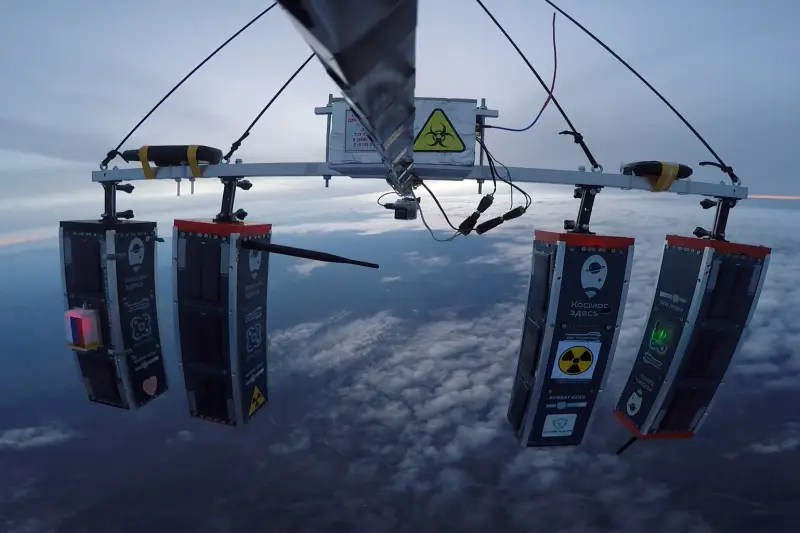
In the small town of Kurganinsk, Krasnodar Territory, a scientific conference was held, one of the main topics of which was the space program of the Center for Youth Innovative Creativity (CMIT) “Perspective”. Despite the modest location, the talk was about the completely “immodest” achievements of the students and mentors of this organization. It seems that here Kuban schoolchildren communicate with satellite and other space technology on a first-name basis.
From the provinces to the stars
Kurganinskaya “Perspective” is far from the only one of its kind. There are about five hundred similar organizations registered in Russia. True, according to statistics from the Ministry of Economic Development, no more than a hundred of them are actively operating. And TsMIT “Perspective”, headed by radiophysicist engineer Kirill Popko, is among the top twenty throughout Russia.
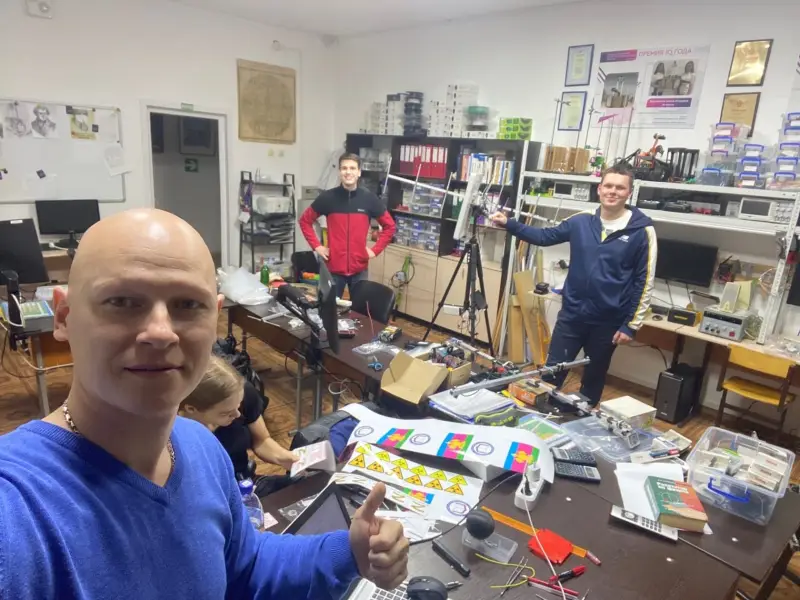
He decided not to limit the activities of the organization he headed only to work with children and career guidance. The objectives of the Center were the development of science and technology, as well as strengthening engineering potential in a number of industries. Initially, these were robotics and information systems, but since 2018, the development of the space industry has become a priority.
The task of developing space systems was set for the center by the Federal Innovation Promotion Fund. Since 2018, Perspektiva has been successfully solving this problem in collaboration with the Roscosmos State Corporation, the Skolkovo Institute of Science and Technology and the Sirius Educational Center.
The space systems laboratories at the Perspektiva and Sirius CMITs were created almost simultaneously, with a difference of a couple of years. Both of these organizations are engaged in training children and youth in this industry and raising its prestige among the younger generation.
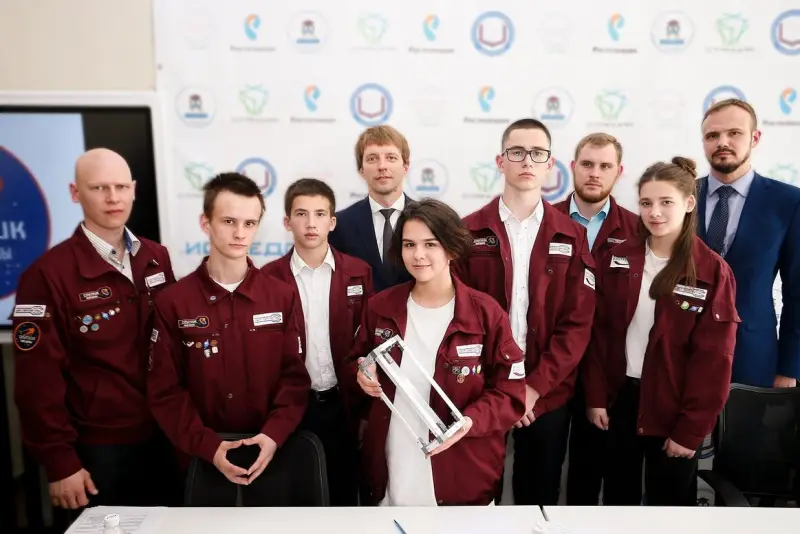
In addition, the Center sets itself the task of supporting the work of the constellation of satellites involved in the Space-P project, aimed not only at popularizing space research among schoolchildren, but also at conducting space experiments and remote sensing of the Earth. Some of the satellites are already in orbit, and the expected size of the constellation should grow to one hundred units. In 2020, at a meeting with Russian Prime Minister Mikhail Mishustin, this program was announced.
Intellectual elite of the Russian army
Another area of activity of CMIT “Perspective” is holding engineering competitions. For two years, the Center was the operator of the “Intellectual Elite of the Russian Army” (IntERA) competition, aimed at cadets and members of the Youth Army.
For two years the competition was based in the Krasnodar region, in the military technopolis "Era" (Anapa). It was directly supervised by the Innovation Promotion Foundation, and the work took place at the Era sites in close cooperation with a representative of the Russian Ministry of Defense.
Later, with the development of the technopolis, the level of secrecy of many of its objects increased, their status changed, so the admission of schoolchildren there became undesirable.
Then the site was moved to the Moscow region, to the Kubinka training ground, where “Tank biathlon". And while the tanks were competing, construction was underway on an area of approximately three thousand square meters for the subsequent holding of engineering competitions. The competition is held in ten areas: underwater, ground, surface robotics, unmanned aircraft, satellite construction, space data reception, development of composite materials, software engineering, 3D modeling and virtual engineering. In other words, the guys are engaged in the development of technical systems and materials science.
Here, in Kubinka, children take part in competitive events, and the Perspektiva Center for International Educational Institutions deals with organizational issues and involves children in this creativity.
The stratosphere is the least studied part of near space
The space program of CMIT "Perspective" is primarily associated with research into near space, the most poorly studied part of which is the stratosphere.
This part of the atmosphere is located at an altitude of 16 to 100 kilometers from the Earth's surface. This area has been little studied, since airplanes and other aeronautical equipment rarely rise above 12 thousand meters. Only some devices can rise to the stratosphere for a short time.
For example, in Nizhny Novgorod, from the airfield of the Sokol aircraft plant, anyone can be lifted into the stratosphere on a two-seat modification of the MiG-29 fighter. The test pilot is at the helm, and the passenger is in the co-pilot's seat. The plane accelerates to a supersonic speed of 1800 km/h and rises to a height of 17-19 kilometers. It remains there for several minutes, after which it descends lower. If the weather is good, at this moment you can even see the outskirts of Moscow from here.
As Kirill Popko said, in its characteristics the stratosphere differs sharply from the denser lower layers of the atmosphere. It is much closer to the part of outer space where our satellite technology usually flies, that is, from 300 kilometers and above. The pressure here is about three percent of what we feel at the surface of the Earth. There are very few particles here, the density is extremely low - it is almost a vacuum. At an altitude of 16 kilometers, the temperature drops to minus 60 degrees. The radiation level here is recorded 60 times higher than on Earth.
Due to such harsh conditions, equipment caught in the stratosphere can fail. Computing equipment may suffer from secondary solar radiation. High-energy particles emitted by the Sun cause radioactive decay of hydrogen and light compounds. They are capable of flashing on-board systems and destroying them. For example, on flash cards, SD media, on which information is simply not recorded.
Cubesat nanosatellites
Schoolchildren from the small Russian city of Kurganinsk mastered the creation and launch of Cubesat 3U format nanosatellites. The international standard U (unit) for satellite technology was introduced in 1999 in the USA. The single-unit device has dimensions of 100x100x113 mm. They are usually used to fill the free space of a launch vehicle, which launches a large device with non-standard dimensions into orbit. It is filled with such “cubes”. They are relatively cheap and weigh about one kilogram.
The cost of putting one such device into orbit is approximately 60-80 thousand dollars. This is a completely acceptable amount even for a large university, which is why Russian and foreign universities are launching nanosatellites.
A 3-unit machine consists of three “cubes” stacked on top of each other. The internal structure is a kind of sandwich, consisting of several layers. This is where the satellite's onboard systems are located. The device is covered with panels, but not sealed. When it flies, it analyzes the surrounding space and transmits data about it to Earth. Another part of the internal space of the satellite is occupied by the payload. For example, in one of the devices there were two Geiger counters prepared for the Krasnodar Polytechnic University. With their help, studies of beta and gamma radiation in the stratosphere were carried out.
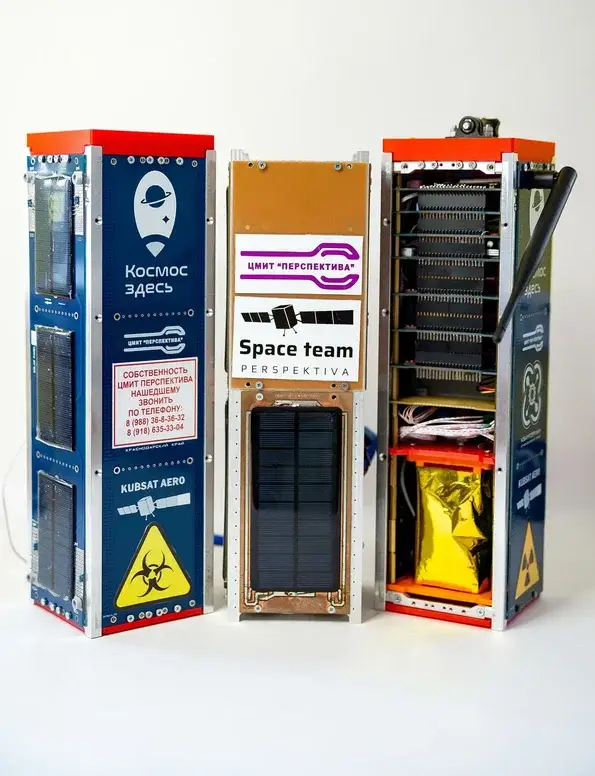
The test launch of such devices took place in 2021, and ground tests were carried out even earlier. This technique was demonstrated to Roscosmos specialists, who tested it in 2019 at the Space Systems Laboratory of the Sirius OC. After receiving a quality certificate from them, the Perspective Center began preparing for stratospheric launches. The stratosphere was chosen because it is cheaper to launch spacecraft there than into deep space, and the goal was to make such launches accessible to young people.
- Kirill Popko explained.
Currently, the Center is developing the fourth generation of such equipment, its launches occur every year. The launch of the devices is not only an exciting spectacle, but also brings tangible results. Young people are actively involved in research. And most often, someone who once became interested in this topic will never leave it.
As Kirill Sergeevich said, all the guys who were involved in these projects are now studying at Bauman University or the Mozhaisky Academy, having entered the faculties of rocket science or space technology.
Antenna systems
After its launch, a ground mobile station operates in conjunction with the satellite, capable of operating at a distance of up to 50 kilometers. It is placed at the launch point, and then it can move behind the device on a vehicle. Then we receive a live image from the satellite.
During the launch, a patch antenna is also used, which operates at a close distance, about 20 kilometers, and is used to receive video signals from the satellite; this antenna has a larger radiation pattern than Yagi antennas. When the satellite's location has already been determined, we point the Yagi antenna at it, which is used to receive telemetry. The information is sent to the receiving unit, which connects directly to the smartphone. And in the mobile application you can see the coordinates of the flying satellite.
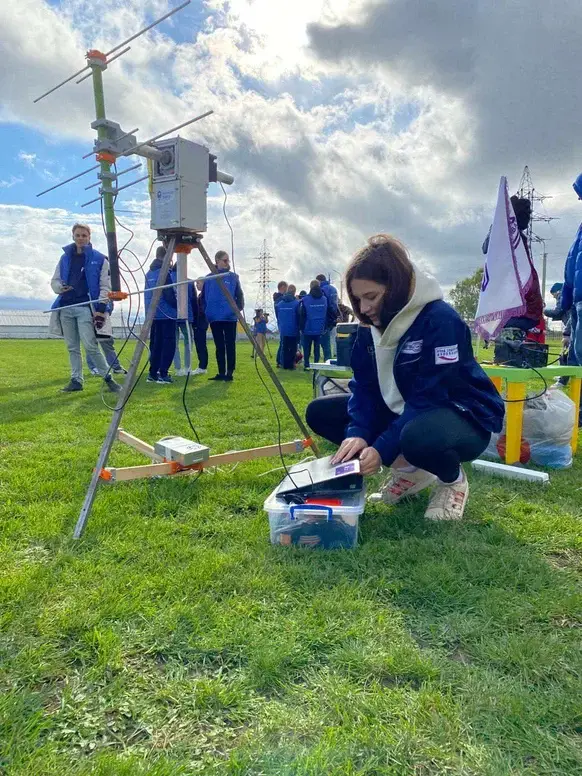
Antennas are also used by students at the Perspektiva Center for Communication Technologies to maintain contact with the constellation of satellites mentioned earlier. When spacecraft fly in the vicinity of the city, the center receives images from them. Thus, the guys build antennas on their own, assemble them and, through a special application, communicate with satellites flying at a certain time. As a rule, this happens in the morning before nine o'clock or after 18 o'clock. During these time intervals they fly in the Kurganinsk area.
- Kirill said.
"Living battery" and other payload
On the one hand, nanosatellite launches are an engineering activity, on the other hand, they are a service provided to customers by the Perspektiva CMIT. Various universities and other organizations work with the Center, creating their own payload and paying for its placement on board the vehicles.
For example, it was previously mentioned about Geiger counters, which were launched into the stratosphere. In 2022, four devices with a biological load were launched to conduct biotechnological research.
A biocapsule was placed in the satellite, which was a sealed container with a lid. Inside were bacteria placed in a nutrient medium. A by-product of their life activity is the generation of electricity. In another part of the interior there was electronics, which were fed by bacteria. Thus, the container with bacteria acted as a “living battery.”
The Center is currently developing video cameras as a payload. In this project, Perspektiva is collaborating with the company Research Center Technologies, which is a manufacturer of video equipment. Its samples are sent to the inception sphere to test the operation of this equipment in harsh climatic conditions.
Launches of vehicles into the stratosphere and a Russian record
This year, in August, the Perspective Center will lift the stratospheric satellite to an altitude of 25 kilometers. The launch took place in Naberezhnye Chelny (Republic of Tatarstan). The device covered almost five hundred kilometers, visiting the airspace of three Russian regions, after which the probe landed.
On that day, a Russian record was set for the duration of an aircraft's stay in the stratosphere, since our satellite spent 13 hours there.
And last year, in October, four devices were launched at once. The event took place in the village of Otradnaya, Krasnodar Territory. Employees of the Perspektiva CMIT together with schoolchildren, students, two engineers from Tomsk, now working at the Rostec state corporation, and biological scientists. I also had the opportunity to be present at the launch of the devices and during the search expedition after their landing.
At the start, its participants encountered problems. There were strong gusts of wind at a speed of 6-9 meters per second. Usually, in such conditions, the launch is postponed, but the customers, which in this case were the Ministry of Education of the Krasnodar Territory and the Quantorium children's technology park, insisted that the launch not be postponed.
As a result, the shell of the probe, which was a latex ball with a diameter of 3-4 meters and filled with helium, burst. Initially, it was planned to launch four devices on two balloons - two for each. But in the end, they launched one probe with four nanosatellites. The location was changed to the village of Convenient. It is surrounded by mountains, so the wind here was not so strong.
The ascent and further flight of the vehicles was successful. The entire process was filmed by cameras located directly on the probe. The receiving antennas were located in the mountains, a hundred meters from the launch site. For the first time in practice at the Perspective Center, the satellites were “catching up with the sunset”, since the launch was in the evening.
The probe headed to Karachay-Cherkessia. And although he flew not far, only 120-140 kilometers, the subsequent night search expedition, which began at about ten o’clock in the evening, took a lot of time. Of course, they no longer included children in this stage. The devices reached a plateau at an altitude of about a thousand meters above sea level. As a result, the search ended successfully, and the found equipment did not receive any damage.
Personnel issue
Schoolchildren and young people are an almost inexhaustible personnel reserve. They just need to be interested and actively involved in work from a very early age. Students at Perspektiva enjoy participating in its projects. Having completed their studies at school, they continue it at the country's leading technical universities. Kirill Popko says that the center he heads intends to develop and strengthen the link between school-additional education center-university.
Of the graduates of the Perspective Center, approximately 98 percent study at the universities of St. Petersburg and Moscow.
Some of them, having become engineers, return to Kurganinsk and work at the Perspektiva CMIT. For example, this happened with Daria Puchkova. She initially studied biology, but later retrained as an engineer. Now Daria is a specialist in the field of biotechnology, nanotechnology and radiophysics. She works at the Perspective Center and serves as a leading engineer there.
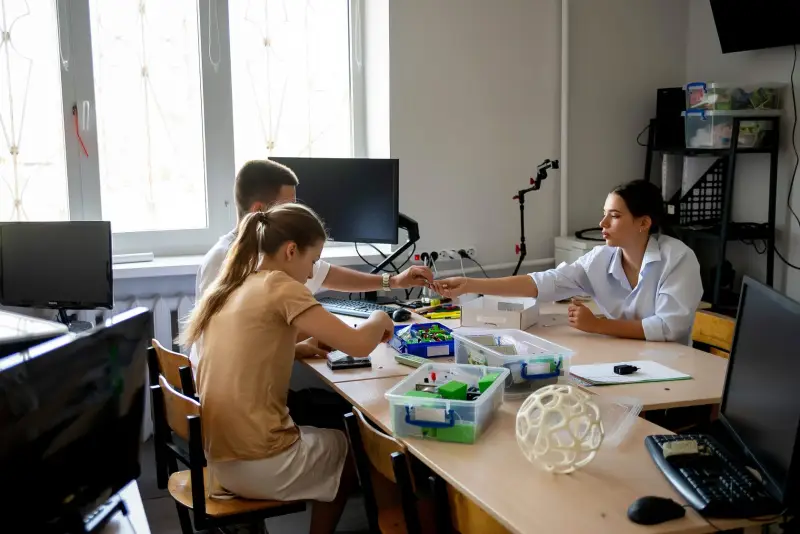
Opposite situations also happen when a person, already retired, has the strength and desire to pass on his knowledge and experience to others. We're talking about Lieutenant Colonel aviation Vladimir Antipov. The officer dedicated thirty years of his service to the Baikonur Cosmodrome. There he participated in supporting space technology launches. After his official retirement, the serviceman did not want to settle for a well-deserved rest.
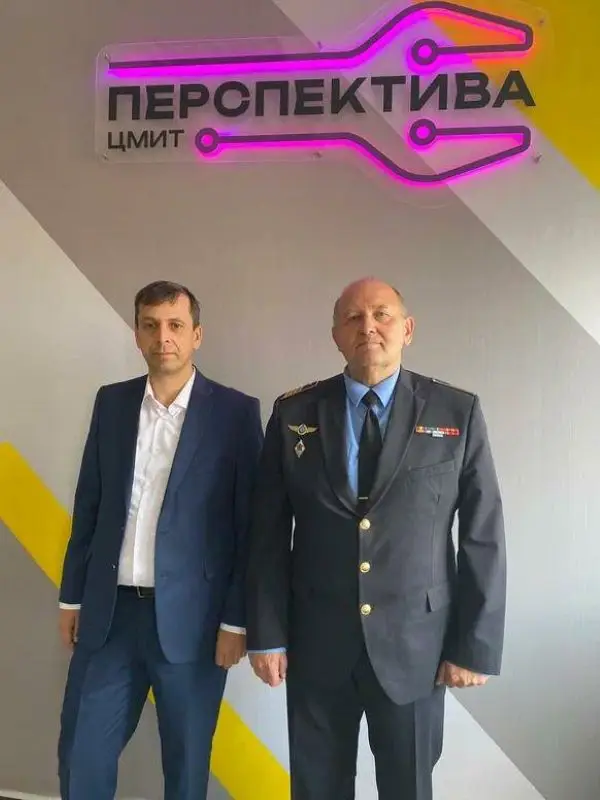
Now Antipov is actively popularizing space technology and rocket science in Kuban. Under the mentorship of a lieutenant colonel, the guys are engaged in rocket modeling. This direction appeared at the Center after Antipov began collaborating with it. For the guys, this is an entry-level level, after which they begin to work on more complex systems.
Information